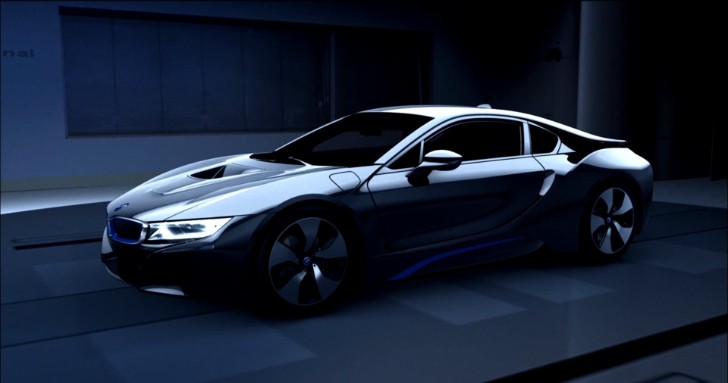Lately we’ve been hearing these two words quite often, especially from BMW’s corner: Dynamics and Efficiency. The Bavarian brand went so far as to even use them together in a concept they call ‘EfficientDynamics’ that we throughly explained a while back.
But what to they actually mean in terms of making a car truly more eco-friendly and faster at the same time? BMW decided it was time it explained the two notions and how they are incorporated in today’s cars, using the i8 as an example.
The thing about making a car lighter is that shedding weight is only half the problem. You also have to do it right! That means you have to cut back in precise areas that will make the biggest difference.
Imagine a car with an extremely high center of gravity like, let’s say a Daewoo Damas. That car is basically box on wheels but it is light. The problem is that even though it weighs under 1 ton, it’s still pretty hard to control and enjoy because its center of gravity is nowhere near the ground.
That makes it look like a drunk elephant when pushed to the limit. It will swing from one side to the other the blink of an eye, eventually leaving you stranded somewhere with its wheels still spinning but upside down.
With cars that want to be ‘dynamic’ and offer the ‘sheer driving experience’ promised BMW had to make sure that shedding weight meant a better overall experience in every scenario.
That’s why, in making the i8 they used aluminum and CFRP but they used it wisely. The body is made of aluminum while the cockpit exclusively out of carbon fiber reinforced polymer. This way, the weight is being kept in check and close to the ground.
Other such innovative measures were incorporated all over the car too. The dash support is made out of magnesium that is lighter than steel. However, it’s also softer and it will only work in conjunction with the body and instrument panel.
All of these are a sample of how weight savings have to be done intelligently. In the near future, we’ll see such technologies applied to other cars as well, cars that are more mainstream like the 7 Series and 5 Series and not only i sub-brand vehicles. For now, we’ll let BMW explain a few things about the future, in the video below.
The thing about making a car lighter is that shedding weight is only half the problem. You also have to do it right! That means you have to cut back in precise areas that will make the biggest difference.
Imagine a car with an extremely high center of gravity like, let’s say a Daewoo Damas. That car is basically box on wheels but it is light. The problem is that even though it weighs under 1 ton, it’s still pretty hard to control and enjoy because its center of gravity is nowhere near the ground.
That makes it look like a drunk elephant when pushed to the limit. It will swing from one side to the other the blink of an eye, eventually leaving you stranded somewhere with its wheels still spinning but upside down.
With cars that want to be ‘dynamic’ and offer the ‘sheer driving experience’ promised BMW had to make sure that shedding weight meant a better overall experience in every scenario.
That’s why, in making the i8 they used aluminum and CFRP but they used it wisely. The body is made of aluminum while the cockpit exclusively out of carbon fiber reinforced polymer. This way, the weight is being kept in check and close to the ground.
Other such innovative measures were incorporated all over the car too. The dash support is made out of magnesium that is lighter than steel. However, it’s also softer and it will only work in conjunction with the body and instrument panel.
All of these are a sample of how weight savings have to be done intelligently. In the near future, we’ll see such technologies applied to other cars as well, cars that are more mainstream like the 7 Series and 5 Series and not only i sub-brand vehicles. For now, we’ll let BMW explain a few things about the future, in the video below.

